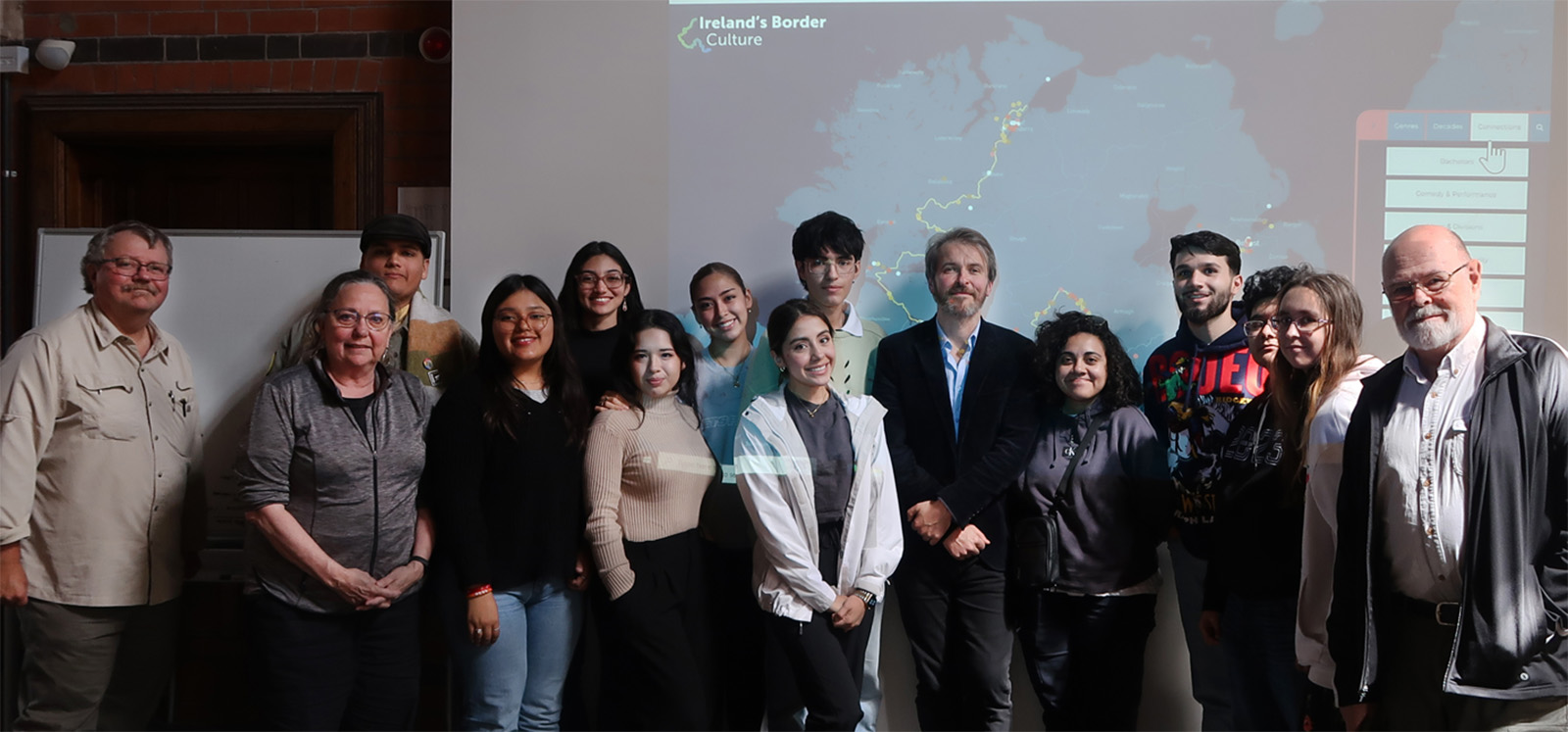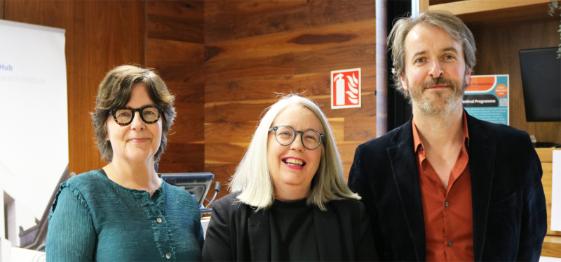Borderculture.net Goes Live!
Dr Garrett Carr

Mitchell Institute Fellow: Legacy, Dr Garrett Carr is Queen’s University’s Primary Investigator on the Ireland’s Border Culture project to research and create an annotated digital archive of literary and visual art representations of Ireland’s border culture, 1921-2024. Work began in January 2023 and the first phase, funded by funded by the Higher Education Authority’s North-South Shared Island Research Programme, has just been completed with the launch of the website.
Borderculture.net is now live!
This groundbreaking open access archive showcases literature, visual art, memoir and film from Ireland’s borderland.
The project is a collaboration between the Trinity Long Room Hub Arts and Humanities Research Institute, Trinity College Dublin, and the Seamus Heaney Centre in the School of Arts, English, and Languages at Queen’s University Belfast. The research team include Eve Patten (TCD), Dr Orla Fitzpatrick (QUB) and Dr Aisling Reid (QUB). The design flare and technical ability of Noho, a web development firm based in Dublin, was also vital.
So far, 170 examples of literary and visual culture from and about Ireland’s border are featured in the showcase across the genres of poetry, fiction, music and drama, visual art, film and travel writing and memoirs. They range from Big Tom’s Back to Castleblayney to Lisa O’Neill’s No Train To Cavan, Spike Milligan’s Puckoon and Rita Duffy’s United Ireland Tea Towel.
Dr Aisling Reid sourced, among other items, memoir extracts from politician and writer Cahir Healy, who was interned on the Argenta prison ship in Belfast Lough from 1922-1924 for his anti-partitionist activities.
The project’s postdoctoral researcher is Dr Orla Fitzpatrick, a specialist in Irish visual culture, who helped ensure a rich variety of photographic work is also available on borderculture.net. “The selected examples illuminate Ireland’s ‘cultural borderscape’ and represent the border as an imaginative and creatively productive space,” explains Professor Eve Patten.
Media interest in the launch of the website include an article in the Irish Times (22 September 2024) and a live interview on RTE’s morning news programme on 21 September 2024. During an interview with the Irish Independent on 27 September 2024, Dr Carr was asked if borderculture.net might contribute to a process of healing around Ireland’s border. “Much of the art, perhaps most especially the documentary films listed on the site, examine Troubles trauma,” he said, “but borderculture.net looks at the border as a kind of cultural phenomenon and that new angle could prompt different sorts of conversations about what the border is now and what it might be next. That could be helpful if not quite healing.”
Using borderculture.net, Dr Carr hosted workshops with student visitors to Queen's.
On 13 March 2024 he led a group from a secondary school in Niort, France, around borderculture.net as part of their project about tourism. “Really interesting and instructive” remarked Ana in her feedback. Rose wrote, “Helped me visualize how it was when there was a hard border between Northern Ireland and the Republic of Ireland.”
On 10 June 2024 Dr Carr welcomed 14 staff and students from the University of Texas. They all work in the Rio Grande Campus, near the border with Mexico, almost all had Latino heritage and several were Mexican immigrants. Photos of the Troubles’ checkpoints caused a student to note in their questionnaire “How similar the current Texas border checkpoints are to the old, patrolled border [in Ireland]”. The deployment of soldiers mostly from England on Ireland’s border caused one student to note that the US may have a different policy. US checkpoints are staffed with border agents the majority of whom “are our ethnicity (Latino).”
The visitors were asked what they would like to see on a Mexico/US version of borderculture.net. Staff visitor Johnathan was interested in “Historical crossing places.” A student was drawn to the border culture website’s photos of Irish border openair markets and said that Pulgas too would belong on such a map. These are flea markets and there are many along their border. “As they are similar to Irish pubs (a place to meet and socialise) and they remain very popular.” Murals were suggested by several students. “It would be nice to have them readily available to see online.”
Dr Carr was contacted by the Border Studies Archive, a repository for the culture and heritage of the South Texas borderlands, as they are indeed now considering a similar project. “Your work has greatly inspired me,” said one of the archivists in an email to Dr Carr. Dr Carr was able to give their team an online tour of the ‘backend’ of borderculture.net, it’s control panel and database, as well as discuss some of the challenges of the project.
One visitor remarked that the site “reminds me that a particular and unique viewpoint exists with border living people.”
Visitor comments are invited via a feedback form on the website and the research team are keen to see how different users will respond to the material. The team are also on the look-out for future inclusions for the collection and invite suggestions on the feedback form too.
To see what artworks are there, please visit borderculture.net.

Pictured L-R: Professor Eve Patten (TCD), Dr Orla Fitzpatrick (QUB) and Dr Garrett Carr (QUB)
Dr Garrett Carr
Dr Garrett Carr is a Senior Lecture in Creative Writing in the School of Arts, English and Languages. His book The Rule of the Land: Walking Ireland’s Border was published in 2017 by Faber. It was a BBC Radio 4 Book of the Week and described as “Great writing about landscape and history” by Colm Tóibín in the Guardian. His next book is a novel set in Co Donegal. The Boy from the Sea will be published in February 2025. “A ruefully funny portrait of a dysfunctional family in a struggling town,” says Emma Donoghue, author of Room and The Wonder. “I was gripped.”
